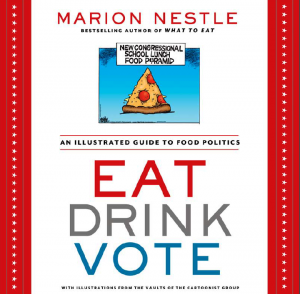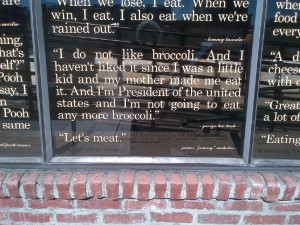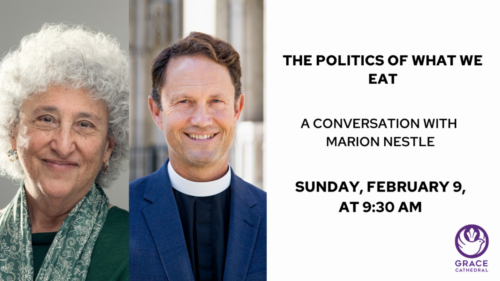The 2013 Kass Lecture at Harvard Medical School
Politics of the Plate
By Susan Karcz
That time has passed. Americans have now become more aware of, and concerned about, what’s in their food and where it comes from thanks to the work of Marion Nestle, author of Food Politics: How the Food Industry Influences Nutrition and Health, an acclaimed exposé of the U.S. food industry’s influence on food policy, which was first published in 2002.
Nestle, the Paulette Goddard Professor in the Department of Nutrition, Food Studies and Public Health at New York University, can pinpoint the moment in the early 1990s when she first became aware of the politics of food. She was attending a conference at the National Cancer Institute on how behavioral factors affect cancer risk when a physician gave a presentation on how cigarettes were marketed to children all over the world.
Nestle described her “absolute shock” at seeing images of cigarette advertisements displayed in remote areas of the world and at playgrounds in the U.S. While she had known that cigarettes were marketed to children, she said she never really noticed the full extent of the advertising. That’s when she had the thought that this scrutiny should go further. “We should be doing this for Coca-Cola,” she recalled thinking.
In contrast, as a public health nutritionist in the 1980s and 1990s, Nestle said she remembered speakers at obesity meetings talking about how to encourage mothers to improve their children’s diets, but marketing was never discussed. Nutrition societies and professional organizations were (and still are) sponsored by food companies, she said, but nobody noticed.
“I wrote Food Politics to get people to notice,” Nestle said.
Nestle has done more than get people to notice since then. She has also shaped the public conversation about how politics affects what all of us eat.
Food safety, labeling, ingredients, agribusiness, health claims, obesity, nutritional supplements, marketing practices—Nestle has researched and written about it all. Her work examines scientific and socioeconomic influences on food choice, obesity and food safety, with an emphasis on the role of food marketing.
Nestle’s most recent book is Eat, Drink, Vote: An Illustrated Guide to Food Politics. Her blog, Food Politics, includes a wealth of information on food and nutrition policy.
To attend:
Nestle will present the 2013 Kass Lecture, titled “Food, Nutrition and Public Policy: Science vs. Politics” for members of the Harvard community in the HMS Walter Amphitheater, TMEC, 4-5 p.m. on Nov. 12. A reception and book signing will follow. To register, click here.








